How Do Animals Know Where To Migrate To
Have y'all ever thought about how animals—some domesticated and others wild—find their way home or places to migrate to each twelvemonth? Believe it or not, certain animals have a built-in, location-finding capability that relies on everything from sight and smell to more intricate magnetic methods of geolocation. Some animals even have innate, map-based orientation systems. Bank check out this impressive list!
Pigeons – Compasses With Wings
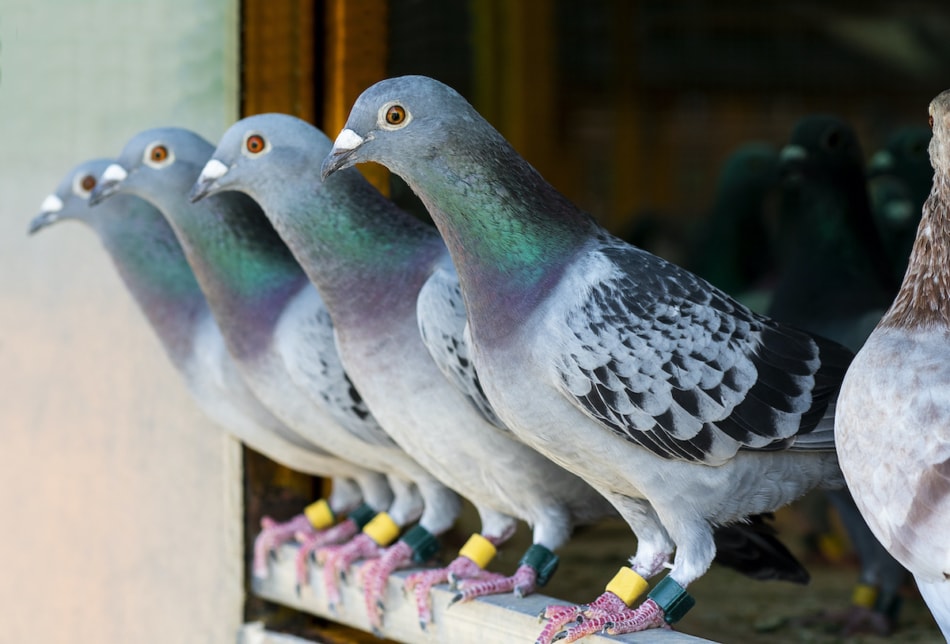
Historically, pigeons played an important role in relaying letters. Since they have an innate homing power, pigeons were routinely used for such things as announcing the winner of the Ancient Olympics and sending covert messages during numerous wars.
Charles Darwin determined that all pigeons ultimately descend from one species—the wild rock dove. Historians claim that humans began breeding pigeons that excelled in specific traits early on, ultimately creating different varieties, such as homing pigeons and carrier pigeons.
How They Practice It:
Scientists surmise the pigeon's ability to dwelling in on various locations with such precision is a result of a "map and compass" type of navigation arrangement. In other words, they orient themselves relative to a goal site, using a combination of the Sunday and other celestial light patterns, sight and odour, various gravity anomalies, and the Globe's magnetic field. Scientists believe special neurons within their inner ear may help them procedure such things equally minute changes in direction and the force and polarity of the magnetic fields around them.
Fun Fact: The carrier dove was bred for its beauty and the homing pigeon for its speed and ability to return home.
Monarch Butterflies – "Recalculating"
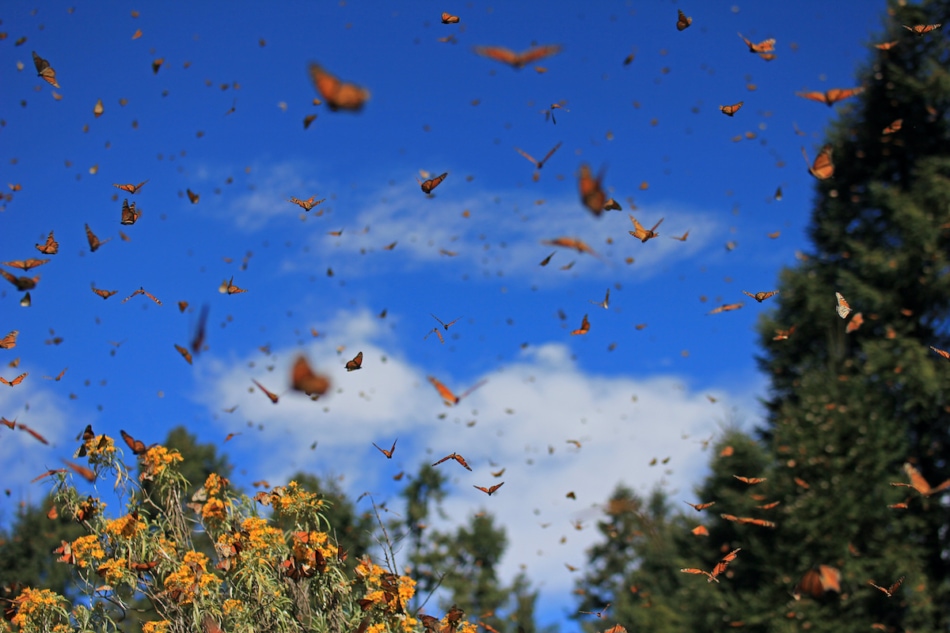
For humans, heading southward for the wintertime is as piece of cake as hopping on a aeroplane, but for millions of monarch butterflies that make the yearly 3,000-mile trek from Canada to United mexican states, they must rely on an internal, genetically encoded GPS organisation.
How They Do It
According to a new Academy of Washington study, butterflies use an internal "compass" that integrates two specific pieces of information—the time of day and the Sun's position on the horizon. To configure this data, they monitor the Sun's position using their extremely circuitous, chemical compound eyes, and an internal, clock-like system within their antennae. They send this information through specific neurons to their encephalon and make up one's mind which direction is southwest. If they are diddled off form, they simply recalculate much like our car's GPS organization.
Salmon – Smells Similar Dwelling
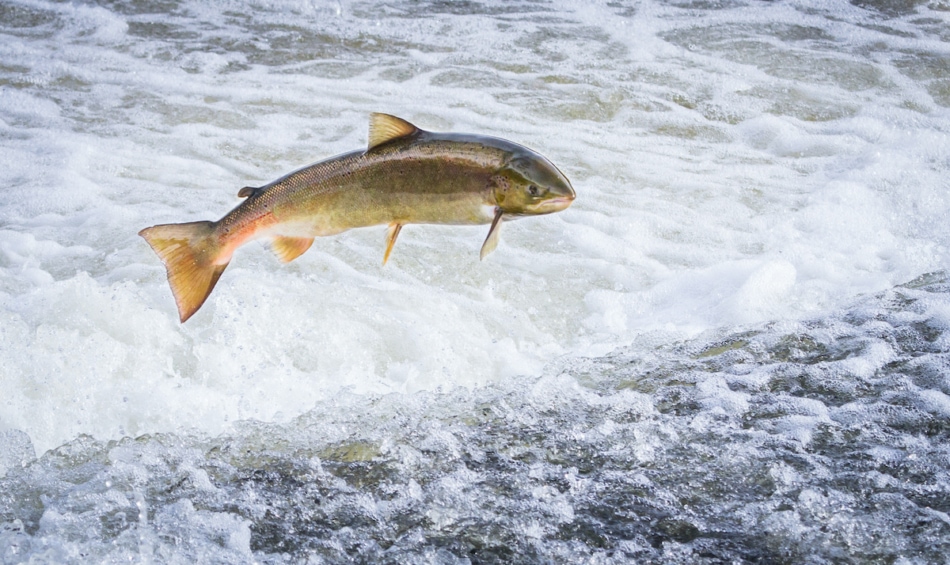
Every year, thousands of juvenile salmon, with no prior migratory experience, make their fashion downstream to specific oceanic feeding grounds hundreds of miles from the riverbed where they were built-in. Several years later, with pinpoint accuracy, they return to that same river to breed.
How They Do Information technology
While the actual process is much more in-depth, scientists have determined that young salmon apply a navigation arrangement like to pigeons (although information technology's more developed, since fish must continuously account for drifting and accept no stationary visual country cues).
Ultimately, they utilize a combination of ecology cues, including length of the 24-hour interval, the Sun's position and angle in the heaven, water salinity and temperature gradients, and the World'southward magnetic field. They may also rely on smells, which they first remembering when they first make their way downstream. While some humans can follow their noses to the nearest baker, it's unlikely they can make their way hundreds of miles abroad past odour alone!
What Well-nigh Pets?
What nearly domesticated animals? Can they fend for themselves if lost, or has domestication made them less skillful than their wild counterparts? How do they measure out up to humans?
Cats – Head-To-Toe Compass
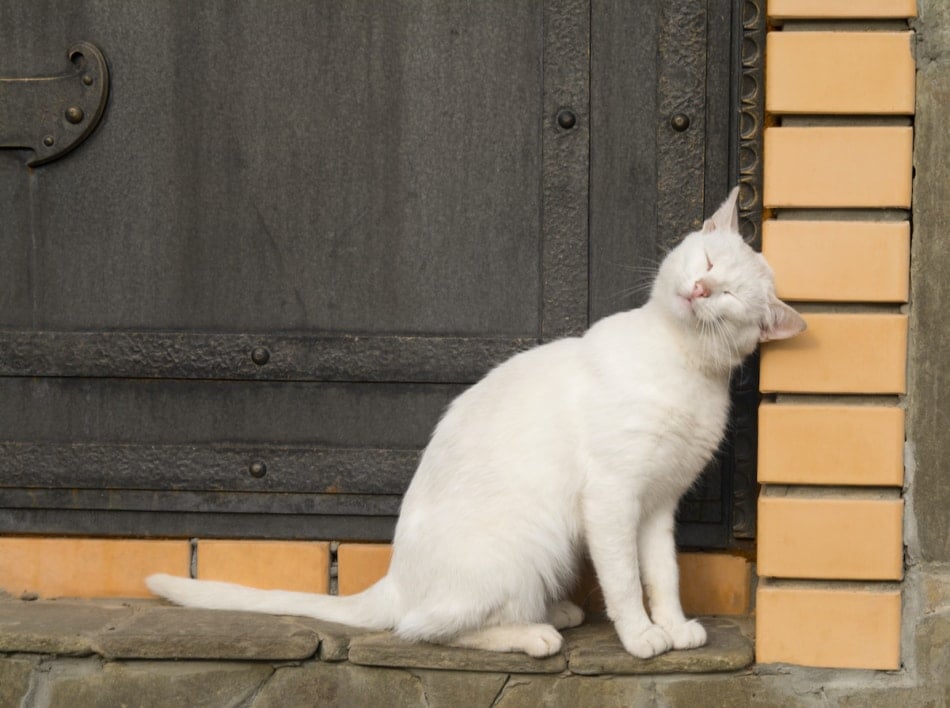
Interestingly, according to the Genome Institute, cats, unlike dogs, are actually only "semi-domesticated." In fact, scientists go as far equally to say there is piffling difference between the average house true cat and wild cats.
How They Do Information technology
In general, cats take very powerful senses. In fact, they take more than 19-million scent receptors. They tend to bond strongly to a home location, even marking their territory by spraying urine or rubbing their many odor glands onto various items in their home area, which also makes it easier to find their way dorsum.
Cats also have incredible eyesight and hearing, and they utilise their fur, whiskers, and paws to gather information to aid them navigate. Scientists accept determined that cats can find the World'due south magnetic fields through atomic number 26 in their ears and peel, which acts as a natural compass.
Dogs – There'south No Scent Similar Abode
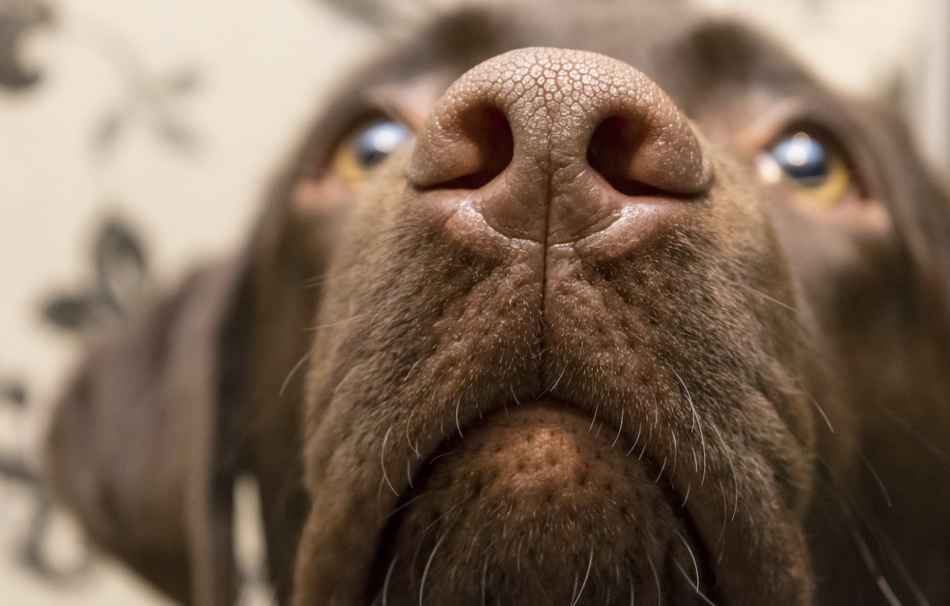
Anyone with a domestic dog knows it'due south all almost smells. Dogs are constantly sniffing everything they come in contact with, so information technology should come every bit no surprise that they as well apply their incredible sniffers to navigate.
How They Practice It
Dogs' noses contain hundreds of millions of sensory neurons—up to 300 one thousand thousand, compared to the half-dozen 1000000 in the human nose, making their sense of smell 10,000-to-100,000 times keener than ours. They besides have a second olfactory adequacy humans don't take—the Jacobson's organ, found at the lesser of their nasal passage, which allows them to odour pheromones.
New studies besides show dogs rely on their sense of smell to pick up familiar scents over a 10-mile distance. Dogs as well see much better at night than humans (because they accept larger pupils, which let in more than calorie-free, and their retinas have more than light-sensitive cells), which makes them supremely better navigators. Some researchers advise if your dog gets lost, y'all can leave a familiar piece of your wearable or their bed outside to help them find their way home.
Whatever way you look at it, animals accept us beat when information technology comes to navigating. While some of us may exist better than others at finding our way, it'due south a good thing we can rely on GPS!

Cynthia McMurray
Cynthia McMurray is a freelance author and journalist, and publisher of a national health magazine. She has written books for leading health professionals and is the owner of Write Words, a consulting business concern for writers. She lives in Halifax, Nova Scotia. Her article, Animals' Amazing Sense of Management appears in the 2021 Farmers' Almanac.
Source: https://www.farmersalmanac.com/how-animals-navigate-home
Posted by: mcleodsallithere.blogspot.com

0 Response to "How Do Animals Know Where To Migrate To"
Post a Comment